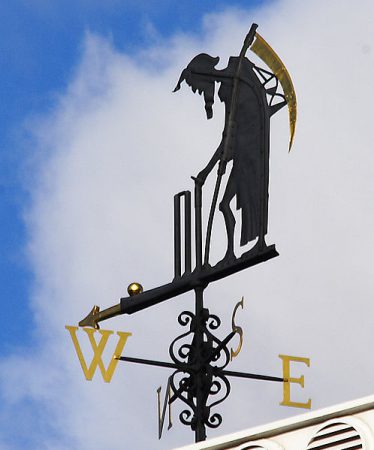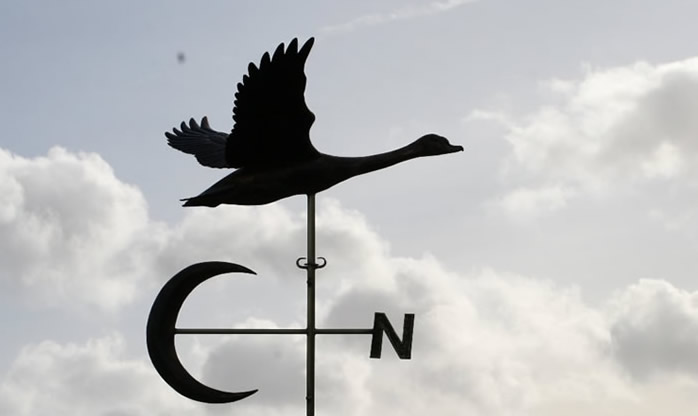"A weather vane, wind vane, or weathercock is an instrument for showing the direction of the wind. It is typically used as an architectural ornament to the highest point of a building. The word vane comes from the Old English word fana meaning "flag".
Although partly functional, weather vanes are generally decorative, often featuring the traditional cockerel design with letters indicating the points of the compass. Other common motifs include ships, arrows, and horses. Not all weather vanes have pointers. When the wind is sufficiently strong, the head of the arrow or cockerel (or equivalent depending on the chosen design) will indicate the direction from which the wind is blowing. The weather vane was independently invented in ancient China and Greece around the same time during the 2nd century BCE."
The idea of harnessing this ancient piece of technology for artistic purposes is intriguing and as far as I'm aware there are no high profile mapping experiments involving the apparatus. I have looked into buying and appropriating an old weather vane mainly due to the complexities of the pivot joint, however, developing my own take on this classic design will be an interesting challenge. One possible drawback of the mechanism is that any form of mapping will essentially document a perfect circle if the tracking element is fixed, however, potentially attaching a pen or paintbrush to a rotating arm via a string would come up with a far less precise result that may show interesting patterns within the wind on a given day and location. Location is an important factor, of course, weather vanes are seen high up and exposed on top of buildings.



:max_bytes(150000):strip_icc()/GettyImages-186864034-58e3355e5f9b58ef7e576b44.jpg) |
Wind velocity or speed can be measured by a cup anemometer, an instrument with three or four small hollow metal hemispheres set so that they catch the wind and revolve about a vertical rod. An electrical device records the revolutions of the cups and calculates the wind velocity. The word anemometer comes from the Greek word for wind, "anemos." This practical use for a weather vane is exactly the sort of thing I would like to produce. However, maybe an immediately visible display would be an effective system for my project.  |
No comments:
Post a Comment